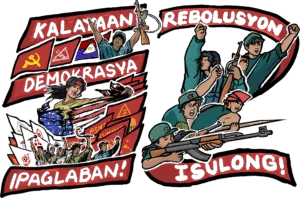III. How have the peasants suffered under the Reform?
The Reformers moved to dissolve the commune as soon as they consolidated their political power in 1979. The Rural Reform first used higher grain purchase prices to entice peasants to leave collectives and go out on their own, so they could pocket the extra income from selling their crops themselves. Peasants took the bait and worked hard to increase production, resulting in a substantial gain in crop production from 1979 to 1984. By 1984, the land had been largely redistributed to individual peasant households.
After the communes were dismantled, China’s agricultural production continued to increase for a short period of time then it has stagnated. One reason is that the agricultural infrastructure built during the commune years began to fall apart and there has been very little investment available in agriculture for even any kind of repairs. In addition, the collapse of the communes has meant that labor can no longer be organized for such agricultural infrastructure projects. Moreover, agricultural machinery bought by production brigades and communes began to age quickly, and individual peasant households did not have the money to invest in new ones. Moreover, in some areas, such as the Yangtze Delta, where land was been subdivided into small strips5, it is no longer possible to use agricultural machinery. Peasants in these areas went back to the ancient ways of farming their land before collectivization, each with simple farm tools. In central and northwest China, where individual land plots average around one mu (1 mu equals 0.067 hectare), major crops (wheat and corn) are still harvested by combines. Private individuals invested in combines, and they harvest (or hire drivers to harvest) crops from farm to farm, charging 40–45 RMB per mu. Combine owners can earn tens of thousands of RMB during the harvest season, and make a substantial profit6.
Another very important factor has been the rapidly shrinking arable land, which has been diverted to industrial and commercial uses and has also been abandoned by peasants because of the low return on farm production. As explained below, natural disasters, both floods and drought, and environmental pollution, have claimed large areas of land and exacerbated problems in agricultural production7 (See Section IV). Moreover, after the large outflow of productive labor from the countryside to the cities, there have been labor shortages in China’s countryside. China has also started to import more grain and other agricultural products since 2003, to meet one of the conditions required for China's ascension to the World Trade Organization. (See Ching, August, 2008)
In the late 1980s, peasants’ lives, especially those who sell crops as their main source of income, have become poorer and more precarious. As the government took further measures to liberalize the agricultural market, the price of crops fluctuated, while the price of agricultural inputs continued to rise. Beginning in the 1990’s increasing number of people started to migrate to cities. Today many of the 320 million peasants who still depend on selling crops as their main source of income suffer from a low and unstable income with little hope for a better future. Moreover, until recently, the peasant population had a heavy tax burden. Even though the central government eliminated taxes on agriculture two years ago, local governments have continued to collect high fees and other levies.
The burden of such collections is too heavy for the peasants to bear. In the past two decades more and more people have been forced to migrate to cities to work and sent money home for their families to survive. As stated earlier, today, nearly 200 million peasants work as migrants in cities. This shows that China’s agriculture can no longer support its rural population; just like other Third World countries, poor migrants in the cities are the sign of agricultural bankruptcy.
While younger and stronger family members leave to find work in cities, the children, the elderly, and the weak have been left behind, subsisting mainly on the money sent home. A recent report indicated that one of the three biggest barriers to agricultural production is the shortage of labor. The other two are the high price of inputs and backward agricultural infrastructure. The report said that without the labor, even if peasants could afford to buy fertilizer, they have no way to transport it or to apply it to their land. (Jing-ji can kao bao, March 26, 2008)
The cooperative hearth care system that was set up as soon as the commune system was established collapsed as communes were dismantled. After the breaking up of the commune system over 20 years ago, former commune members lost their health and other benefits that had carried them through hard times. As far as health care is concerned, peasants in the countryside suffer even more than city residents. According to the Status of Rural China – 2003 –2004, participation rates for peasants in any kind of insurance are very low. In 2002, the participation rate for the rural population in old age insurance was 7.7% but only 1.4% of the insured actually received an old age pension (about one tenth of 1% of the rural population)8. Only about 5% of rural residents participate in cooperative health insurance, because they cannot afford the high premiums and co-pay. In 2002, 170 million people were affected by natural disasters, but only 9.4 million, about 5%, received any kind of disaster relief (Li, 63).
The absence of any preventive healthcare has meant that infectious diseases, such as tuberculosis, schistosomiasis, and many others, which were basically wiped out in the 1950s, have returned in full force9. In addition, new infectious diseases, such as HIV/AIDS and SARS have caused suffering for tens of million people, not only from the effects of the disease, but also from government denials and cover-ups, and the low priority government places on public health.
After the collapse of the communes, the rural education system organized and managed by the communes also fell apart. The commune welfare fund, which supported elementary and secondary schools in the countryside, is gone. Support from the Central government, which paid for building schoolhouses and teachers’ salaries, was also reduced or completely cut off. (There is currently a plan for the Central government to increase its spending on education in rural areas.) Some rich villages have built their own schools, but the many more poor villages do not have the resources. In the early 1990s their schoolhouses were already falling apart, badly in need of repair. Many teachers continued to teach even when they did not get paid for many months, until schools in many villages closed down altogether.
After thirty years of hard work, peasants in China are again on their own, often working with primitive tools, and they are helpless when disasters, either natural or man-made, strike. The government no longer supports nor protects them. Instead, government bureaucrats collect fees and evict them when they make deals with developers.

